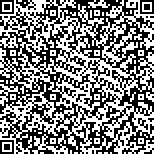| 本文已被:浏览 3408次 下载 3722次 |

码上扫一扫! |
|
|
| 基于GIS的桑沟湾及周围海域海带养殖适宜性评价 |
|
孙倩雯1,2, 刘慧2, 尚伟涛3,4, 于良巨4, 姜晓鹏3,4, 蔡碧莹1,2, 常丽荣5, 肖露阳5
|
|
1.上海海洋大学水产与生命学院 上海 201306;2.中国水产科学研究院黄海水产研究所 青岛 266071;3.中国科学院大学 北京 100049;4.中国科学院海岸带环境过程与生态修复重点实验室 中国科学院烟台海岸带研究所 烟台 264003;5.威海长青海洋科技股份有限公司 荣成 264316
|
|
| 摘要: |
| 目前水产养殖面临用海冲突、单位面积和人均生产率偏低、养殖业的生态和经济成本较高等问题。为充分利用海区的自然生产力,提高养殖效率和效益,需要对海区进行适宜性评价,选择最适宜的水域进行养殖。以桑沟湾及周围海域主要的养殖品种海带(Saccharina japonica)作为评价对象,选取光照、温度、流速、无机氮、盐度、深度作为适宜性评价指标,利用遥感技术确定海区养殖布局,通过野外调查和数据模拟获取养殖海区环境参数数据,根据动态能量学(Dynamic energy budget, DEB)模型——STELLA模型敏感性分析结果,并结合层次分析法计算评价指标权重,海带生长相关环境因子的强制函数拟合得到单因子评分曲线进行评分。最后,采用线性加权叠加分析方法得到海带养殖适宜性评价结果。适宜性评价过程以地理信息系统(Geographical information systems, GIS)作为技术支持,利用GIS空间插值功能生成光照、温度、流速、无机氮、盐度、深度专题图层,采用栅格计算功能对各专题图层进行叠加,得到综合多因素的海带养殖适宜性评分和适宜性等级。评价结果显示,在不考虑用海冲突的情况下,桑沟湾及周围海域海带养殖适宜性分数分布在0~6.7范围内,分值主要集中在4~6分,属于中等适宜,占研究区总面积的67%,最适宜和不适宜分别占研究区总面积的23%和10%,无一般适宜区。评分较高的区域主要分布在北部爱莲湾和楮岛东部海域周围,适宜性评分较低的区域主要位于近岸水深较浅的海域。根据适宜性评价结果可进行水域空间规划和安排养殖生产计划,为管理部门开展养殖分区和海洋功能区划提供参考。 |
| 关键词: 水产养殖 适宜性评价 养殖区选址 GIS |
| DOI:10.19663/j.issn2095-9869.20181024001 |
| 分类号: |
| 基金项目: |
|
| GIS-Based assessment for culture suitability of kelp (Saccharina japonica) in Sanggou Bay and the surrounding waters |
|
SUN Qianwen1,2, LIU Hui2, SHANG Weitao3,4, YU Liangju4, JIANG Xiaopeng3,4, CAI Biying1,2, CHANG Lirong5, XIAO Luyang5
|
|
1.College of Fisheries and Life Science, Shanghai Ocean University, Shanghai 201306;2.Yellow Sea Fisheries Research Institute, Chinese Academy of Fishery Sciences, Qingdao 266071;3.University of Chinese Academy of Sciences, Beijing 100049;4.Key Laboratory of Coastal Environmental Processes and Ecological Remediation, Yantai Institute of Coastal Zone Research, Chinese Academy of Sciences, Yantai 264003;5.Weihai Changqing Ocean Science & Technology Co., Ltd, Rongcheng 264316
|
| Abstract: |
| With the expansion of aquaculture, there is an increasing concern regarding issues such as conflicts with multi-sea use, low productivity, and higher economic costs. The selection of suitable sites for aquaculture is essential for utilization of sea space and improvement of the efficiency and profits of aquaculture industry. Kelp (Saccharina japonica) is the main culture species in Sanggou Bay and the surrounding waters. The assessment of suitability for kelp culture has been conducted with factors, including light intensity, water temperature, velocity, dissolved inorganic nitrogen, salinity, and depth. The remote sensing is employed to obtain the information of the existing culture areas. The environment variables were collected from field surveys along with model simulations. The Dynamic Energy Budget (DEB) model–STELLA model coupled with analytic hierarchy process was applied to calculate weighted-sums of scores for suitability evaluation. The result showed that the suitability scores were 0~6.7 with the main distribution range of 4~6. 23% of area was estimated to be the most suitable for kelp culture, whereas 10% of total study area was not suitable. The high score areas are mainly located in Ailian Bay and Chudao eastern surrounding waters, whereas the low score areas are mainly located in the shallow waters near the shore. The results have provided a guideline to help in site selection and in the management of kelp culture. |
| Key words: Aquaculture Suitability assessment Site selection GIS |